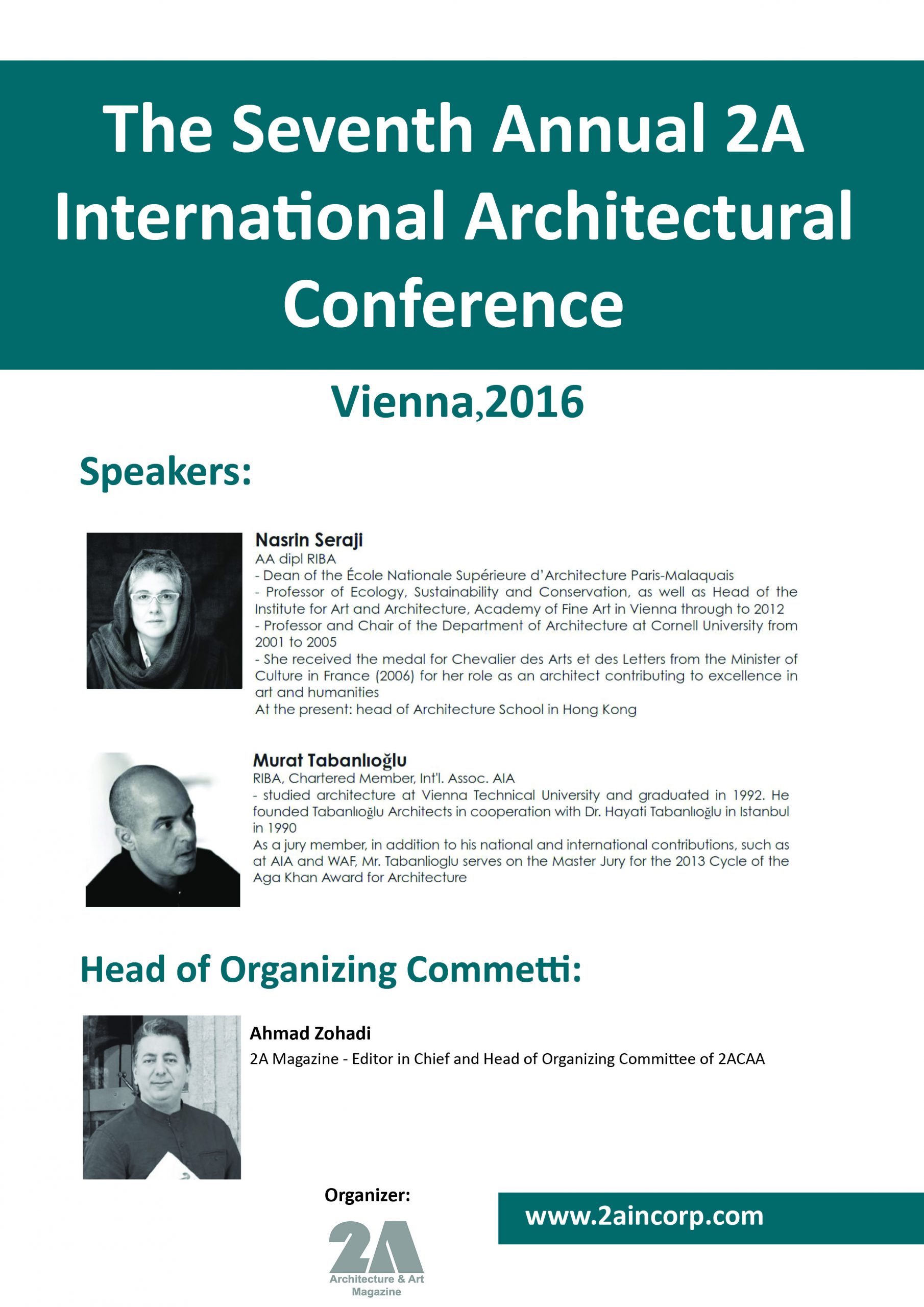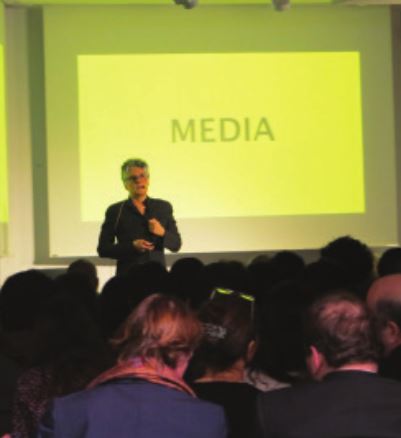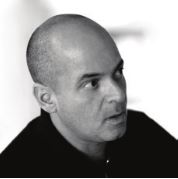

Nasrin Seraji
Architects, planners and landscape architects need to reconsider the way that they work together as well as the way they look at sites. The complexity of territories related to their economies and their development are presenting our disciplines with many urgent questions.
Specificity and the local conditions are primordial, hence the understanding of the site of intervention, its social specificities, its political and economical characteristics, its climatic conditions and its genetic code are of utmost importance to the way that we propose projects. We have to carefully read and describe the sites before “writing” anything on it. Architecture can only have an effect on our society if the lay people understand it and want it. Architects have for too long alienated the public from the necessity of architecture by using an internalized jargon foreign to all other disciplines. We need to propagate the idea of intelligent minimum; minimum material, minimum cost, minimum intervention, etc… in order to slow down and eventually alleviate the destruction of our environments.
I did not judge the projects based on cultural exchange nor on cultural similarities. Every architect has a wide circle of knowledge: visual, cultural as well as an understanding of techniques, structure, craftsmanship, technologies and material availability. The shortlisted projects showed a varied level of formal and conceptual dexterity. Each project was a witness to the conditions in which architecture is being produced and commissioned. I tried to discuss with the other members of the jury as to the relevance of these visible elements and to ask everyone to consider the specificity of the place and the context in which the works have been produced. It is true that globalization, facebook, Deezeen, Pinterest and the digital media have created a flatter world, but there is still the reality of local conditions and historical relevance when it comes to architecture.
We are absolutely astonished at the speed of development in Asia (even though it has been slowing down in the past few years). However it is not a simple affair to understand the contemporary architectural and urban landscapes of Asia as it is an immense continent with very varied histories and traditions. From East of Turkey to Japan there are many countries, cultures, societies, economies that are quintessentially different from one another with some similarities such as the relationship of landscape and the built form present in Iranian miniatures and Chinese paintings of the Qing dynasty, or the Japanese and Korean attention to illustration and the relationship of people to architecture, or the colours of India and the intensity of the discovery of landscape through architecture.
Generally speaking there is a trend of “search for identity”, identity of ancient cultures that are struggling with situating themselves as full members of a global new culture of architecture and urbanism. This however results in very different ideologies: those which are simply formal resemblance of the past drawn to be a symbolic understanding of the regional signs of identities, or in the best case a kind of critical collage of local materials specific to a region or a country forming a familiar architecture of late modernism. The question is a critical one as Asia needs to reconstruct the glory of its past through a painful uncertain future.
The word context disappeared for almost a decade from the vocabulary of architects due to a grave misunderstanding of the famous “fuck context” by Rem Koolhaas. We are at a crossroads when context has become so crucial that it is almost everything, the younger generation has started to inhabit it and most projects are mostly descriptive rather than proposals. Context is the ground on which we as architects, urbanists and landscape architects need to build our questioning of the status quo.
The ground is both a physical and conceptual platform from which we need to problematise architectural interventions. The specific context is the only way that we can avoid to do cookie cutter architecture. The economy with which we build in France is very different from that in Iran, so how can we produce the same form and architecture? The capacity of labour and the relationship between technology and construction cannot be compared from Japan to Sri Lanka. There is a great film by the late Harun Farocki, the very well known German filmmaker, author, and lecturer in film, that illustrates this point very well by showing brick production and construction in various times and places. “In Comparison”( Zum Vergleich) is the name of this film. I recommend it to every one who is remotely interested in specificity, the generic and more importantly architecture.

Murat Tabanlıoğlu
Either referring to primary principals of Neo-Rationalism or New Rationalism, Aldo Rossi or Alexander Pope’s words of Genius Loci, every place has its own customs born out of conveniences and needs, including the geographic and cultural values. Align with vast technological developments of our era, almost anything is within the bounds of possibility, if one prefers. The question is, would the solution be feasible, and most importantly lovable and livable by the end user(s), would the inhabitants, citizens be content with the interpretation or would the “new” structure become an element of alienation, may be a luxurious yet a generic sculpture.
The foundation of the place and the demand of the consumers are the principle input of the architectural decisions. This does not necessarily mean to maintain and repeat what is existing, but using the local capacities, in terms of know-how, method and materials, the architect must be capable of using the most novel opportunities in a smart-local approach for a healthier and easier life pattern, for improved levels of individual and social well-being. The architectural element- from a single building, to a landscape organization or a master plan- is an esthetic contribution as long as it serves the environment and a holistic development.
Asia has been experiencing an overwhelming rate of development with an impact on the international architecture scene. But Asia is a broad description. The contemporary samples vary from the ‘dehumanising’ tendencies of competitive urban items to down-toearth humane solutions. Issues of our era create problems as well as resolutions.Beyon modernity, alongside the technological improvements, inequality in sharing-natural, social and economic – resources impose gated communities that embrace of all that is best of the globalized world, dominated by Western culture.
To me, context always must be taken into account in the design process, yet, building’s setting should principally inspire rather than constrain, without limiting architectural creativity.
Innovative response to the setting is important for a sustainable everyday living and urban development. Profound understanding of the space and its connections would lead the new building to fit well in its location, as if it has always been there, and moreover, it becomes a catalyst to urban life. A successful context-sensitive architectural work holds its contemporary identity while blending in with the existing values.
For example, we have very recently faced this in the special case of the Beyazit State Library renovation; the problematic was designing a contemporary structure in a heritage building which is also a significant fragment of urban culture with rich historical connections. With reference to its surrounding history starting from its façade, function-based design solutions through subtle nods like use of materials of today next to – or reflecting, even marking – the existing qualities of the 15th century building, provided that the contemporary additions do not stand out too much. Briefly, contemporary architectural moves do not necessarily have to fall on one side of the “belongingness” issue or be a total “mismatch”.
Ahmad Zohadi:
2A Continental Architectural Awards: Beyond the obvious professional architectural advantages and characteristics, the Continental awards is hoping to help enhance Peace, Compassion and Unity around the world:
Any form of artike architecture have a magical quality which may be subtle and invisble to many people. It has the power to help both the artists and its observers to shift their attention and viewpoints from the material 10 more subte esthetic, orical social, cultural and sometimes dimensions, and in doing so it helps to bring people closer together and enhance peace, Kindness and unity among different ethnic groups and nations in a way, it shifts the focus from segregation to unity. From dividing mental approach which may focus only on aerences which tries to show one group superior to another into a more humanistic and even spiritual approach which focuses on similares and unifying factors such as esthetic, common human emotions such as need to love, charity and worship 2A Magazine as organer of 2A Continental Architectural Award hopes to achieve a broader goal, which is by bringing architects who are also creative artists, together and providing an opportunity for sharing and Interacting ideas, help enhance peace, friendship, and asseminate the wave of unity, trench and peace around the world Meeting this goal. 2A magazine will take another step towards creating a forum for all architects around the Globe to expand and rich their vision about architecture.

